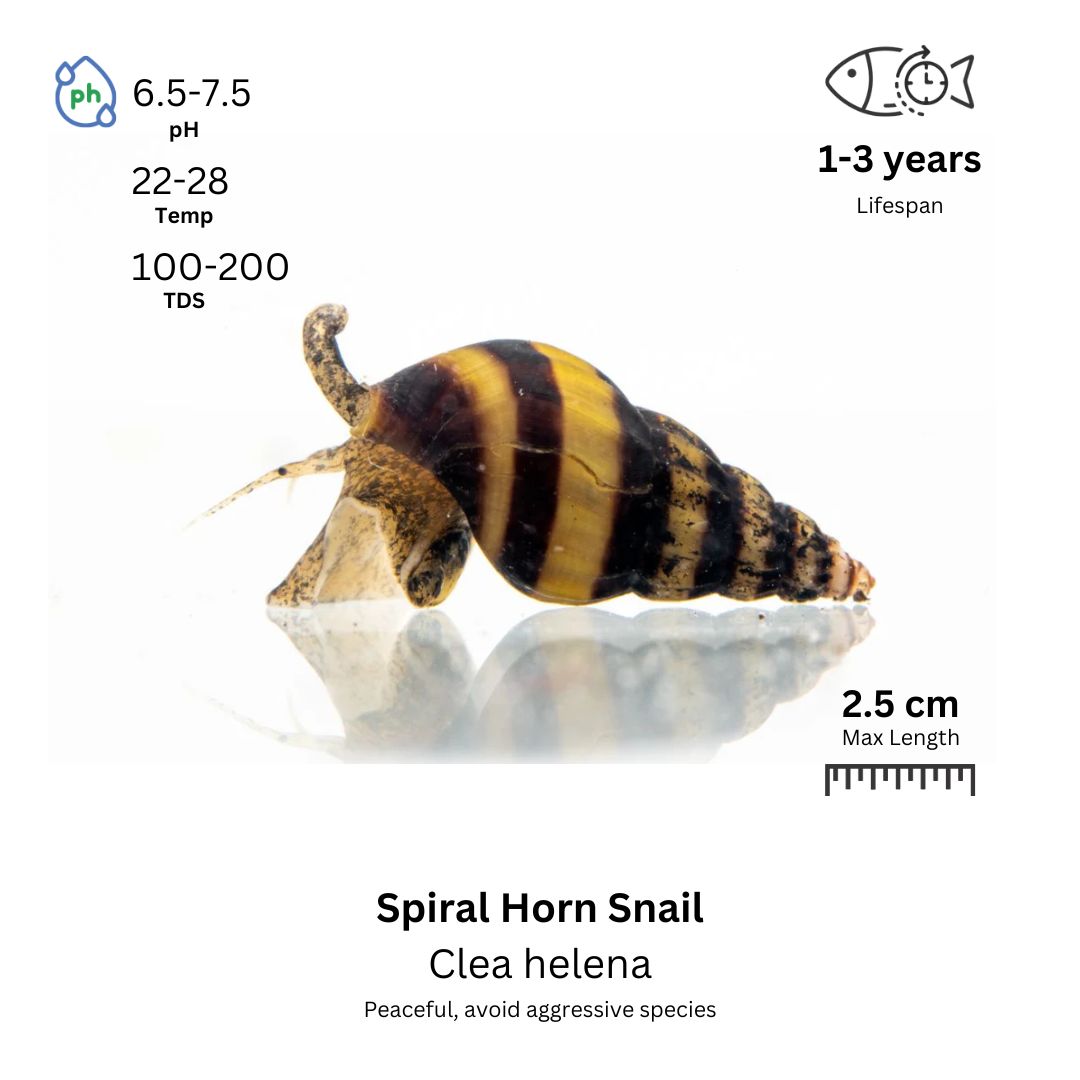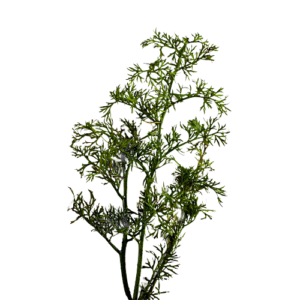Spiral Horn Snail: Species Profile
Species Overview
Common Name: Spiral Horn Snail
Scientific Name: Planorbis corneus var.
Adult Size: Up to 1 inch (2.5 cm)
Life Expectancy: 1-2 years
Characteristics
- Family: Planorbidae
- Origin: Asia and Europe
- Social: Peaceful; solitary or in groups
- Tank Level: Bottom and surfaces
- Minimum Tank Size: 5 gallons
- Diet: Herbivorous scavenger
- Breeding: Easy in freshwater tanks
- Care Level: Beginner-friendly
- Preferred pH: 7.0–8.5
- Water Hardness: Moderately hard
- Temperature: 70–80°F (21–27°C)
Origin and Distribution
The Spiral Horn Snail is commonly found in freshwater habitats such as ponds, rivers, and slow-moving streams. These snails are highly adaptable and thrive in a variety of environments, making them a popular addition to aquariums.
Colors and Markings
The Spiral Horn Snail is easily recognized by its coiled, horn-like shell, which can range in color from brown to reddish-orange. Its body is typically dark, contrasting with the lighter hues of the shell.
Tankmates
Spiral Horn Snails are peaceful and compatible with many other tank inhabitants, including:
- Small, non-aggressive fish like guppies or tetras
- Shrimp and other small invertebrates
- Other snail species
Avoid housing them with aggressive fish that may nip at their soft bodies or try to eat them.
Habitat and Care
To keep Spiral Horn Snails healthy, create a tank environment that mimics their natural habitat. Key considerations include:
- Tank Setup: Use a soft substrate and include rocks, driftwood, and plants for them to graze on.
- Water Quality: Maintain stable water conditions and ensure there is no copper in the tank, as it is toxic to snails.
- Maintenance: Perform regular water changes and monitor water hardness to keep their shells strong.
Diet and Feeding
Spiral Horn Snails are natural algae eaters and will clean tank surfaces effectively. They enjoy:
- Soft algae on glass, plants, and decorations
- Vegetables such as zucchini, cucumber, or spinach (blanched before feeding)
- Commercial algae wafers or snail pellets
Feed sparingly to avoid overloading the tank with excess food.
Gender Differences
Spiral Horn Snails are hermaphroditic, meaning each snail possesses both male and female reproductive organs. They can reproduce without a partner, making them prolific breeders in aquariums.
Breeding
Breeding Spiral Horn Snails is straightforward in most freshwater tanks:
- Egg Laying: Snails lay small clusters of jelly-like eggs on tank surfaces, decorations, or plants.
- Hatching: Eggs hatch in 1-2 weeks, depending on water temperature.
- Care for Young: Young snails are independent from birth and require no special care, feeding on algae and biofilm.
Further Research
Spiral Horn Snails are not only fascinating to watch but also provide practical benefits to aquariums as natural cleaners. Learning more about their behavior and care can enhance their role in your aquatic ecosystem.
FAQ
Q: Do Spiral Horn Snails overpopulate tanks?
A: Yes, they can breed rapidly in tanks with excess food. Proper feeding control can help manage their population.
Q: Can they live in unheated tanks?
A: Yes, they are tolerant of a wide range of temperatures and can thrive in unheated aquariums.
Q: How do I know if my snail is healthy?
A: A healthy snail is active, has a smooth, intact shell, and frequently grazes on surfaces.










Reviews
There are no reviews yet.